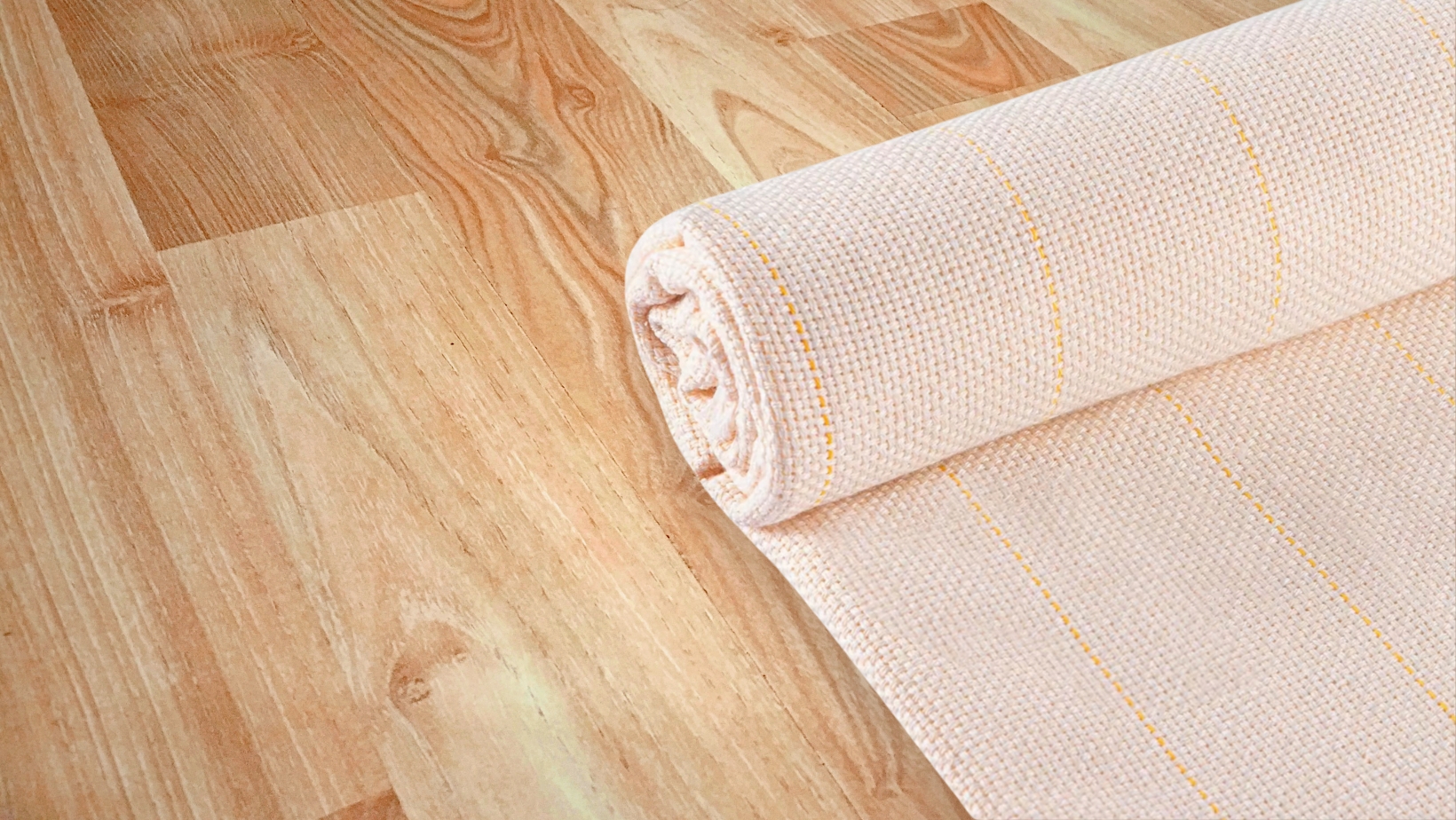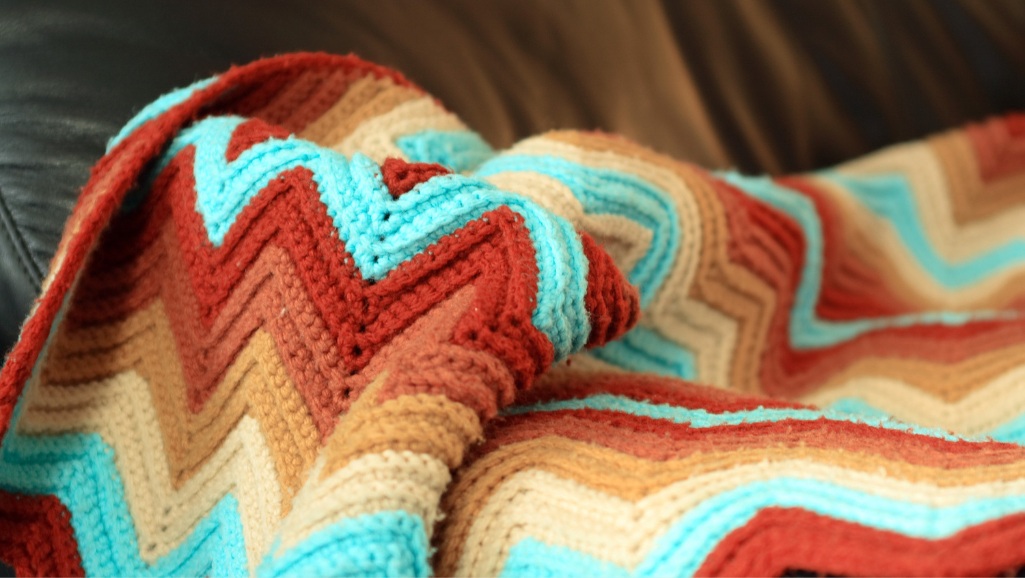We use cookies to ensure a comfortable browsing experience on our website and to continuously improve its features, performance, and usability through traffic analysis. Learn more.
Wondering what a monk's cloth is and how it can be used in the creation process? This sturdy and versatile material is a favorite among crafters for projects like tufting or embroidery. In this article, you'll discover what makes monk's cloth special and how you can use it in your creative endeavors.

Key takeaways:
- Monk's cloth is a type of fabric made primarily from cotton.
- With its robust weave and versatility, it is an essential fabric for any crafter's toolkit.
- Whether you’re tufting a cozy rug, stitching a detailed embroidery, or making rustic home decor, monk's cloth offers the durability and flexibility needed for success.
- While similar fabrics like Aida cloth have their own unique uses, monk's cloth stands out for larger, sturdier projects.
What is monk's cloth?
Monk's cloth is a popular fabric because it's strong and versatile. It was first used for making robes, but now it's also great for arts and crafts, especially punch needlework. Here’s what makes monk's cloth special:
Strong and durable
Monk's cloth feels rough but is very tough. Some types are softer, but all are strong. The thick threads make it last a long time, whether you use it for clothing or art.
Loose and even weave
The fabric has a unique weave pattern, with threads crossing in a 4x4 basketweave. This makes it look checkered and is perfect for punch needlework. The weave is loose enough to easily push a needle through but tight enough to hold the yarn securely.
Made of 100% cotton
Most monk's cloth is made from heavy cotton, which is breathable and strong. This cotton can handle different craft techniques and is known for its long-lasting quality.
Excellent draping
Monk's cloth hangs nicely, not too stiff or too flowy. This makes it great for robes, curtains, wall hangings, and even upholstery.
6 great ways to use monk's cloth
Monk's cloth is a versatile fabric widely used in various crafts and home decor projects. Here are some of the most popular ways to use it:
1. Tufting
You probably figured we'd mention this first on Tufty. And we stand by it, of course this fabric is great for tufting. And it's the best use because tufting is just the best. It's durable with an open weave, making it perfect for hooking or punching rugs. The loose weave allows for easy insertion of yarn or fabric strips, enabling the creation of intricate designs that can withstand heavy foot traffic.
2. Embroidery and cross-stitching
This fabric is also popular among those who love embroidery and cross-stitching. Its even weave is ideal for large, bold designs. The grid-like pattern helps keep stitches aligned and ensures accurate patterns. This makes it suitable for both beginners and experienced crafters.
3. Chair covers and slipcovers
Finally, monk's cloth is a practical option for making chair covers and slipcovers, especially in casual settings. Its durability ensures that the covers can handle daily use while providing a simple, down-to-earth look.
4. Pillows and cushions
Monk's cloth is perfect for making decorative pillows and cushions. It's strong yet flexible, making it a great base for various needlework like embroidery. The fabric’s strength ensures that the cushions hold their shape and withstand regular use, while its texture adds a rustic charm to home decor.
5. Curtains and drapes
If you’re aiming for a rustic or farmhouse-style look, monk's cloth can be used to make curtains and drapes. Its texture and appearance lend themselves well to this style, offering a natural, slightly rough look that complements wooden or vintage decor. The fabric also drapes nicely, making it ideal for these applications.
6. Afghan blankets
Monk's cloth is an excellent choice for making warm, soft afghan blankets. The fabric’s loose weave adds warmth and texture, making it popular for creating cozy and comfortable items. Whether knitted, crocheted, or woven, monk's cloth gives these blankets a special feel.

How to use monk's cloth when tufting?
Monk's cloth is a popular fabric for tufting because it's strong, has a loose weave, and holds yarn well. Here's how to use it:
- Prepare the fabric: Measure your project, add a few extra inches, and cut the cloth. You can sew the edges to prevent fraying if you want.
- Attach to frame: Stretch the monk's cloth tightly on your tufting frame and secure it with clamps, nails, or a staple gun.
- Design your pattern: Draw your design on paper first, then transfer it onto the cloth using a fabric marker. Start with simple designs if you’re a beginner.
- Start tufting: Load the tufting gun with yarn and follow your design. Make sure the depth is set correctly for even loops.
- Finish up: Once done, secure the back with glue or a backing fabric. Trim the yarn if needed, remove the cloth from the frame, and sew the edges if required. Finally, check for any loose threads and tidy up your piece.
Where to buy monk's cloth
While some might think of checking local stores first, finding monk's cloth in brick-and-mortar locations can sometimes be challenging. Specialty stores that carry tufting supplies or a wide range of fabrics might have it, but you could come up empty-handed in general craft or fabric stores.
The most reliable way to find monk cloth is at online fabric stores. Many sites specialize in materials for making and often have monk cloth in stock. When you shop online, you can usually choose from a variety of colors and sizes. This gives you the opportunity to order exactly what you need, whether a small piece or a larger quantity.
If you’re into tufting, some stores, like Tufty.eu, not only sell monk's cloth but also other tufting supplies. This can be a one-stop shop for all your needs.
Buying from China can be cheaper. But beware. Delivery can take a long time and there is often no guarantee. If something goes wrong, you could be out of luck. That's why it's sometimes better and safer to buy from a local or well-known shop, even if it's more expensive.
Is Aida cloth the same as monk cloth?
Aida cloth and monk's cloth are both popular fabrics for crafts, but they serve different purposes due to their distinct characteristics.
Fabric structure
- Aida cloth: Features a firm weave with visible squares or holes, ideal for cross-stitching as it makes needlework precise. It resembles a grid, perfect for detailed patterns.
- Monk's cloth: Has a looser, basket-like weave with a 4x4 rule, where four threads cross four threads. It appears checkered and is looser than Aida, making it ideal for techniques like punch needle embroidery or rug-making with thicker threads.
Material
- Aida cloth: Made mostly from 100% cotton, it’s stiffer due to its tight weave and starch used in production, helping it hold its shape during detailed stitching.
- Monk's cloth: Also 100% cotton but softer, especially when of high quality. Its loose weave allows it to bend and stretch easily, making it suitable for projects requiring flexibility.
Uses
- Aida cloth: Primarily used for cross-stitching and other counted thread embroidery. It’s designed for finer threads like embroidery floss, ideal for detail and precision.
- Monk's cloth: Used for punch needle embroidery, rug-making, and other textile arts that need a looser fabric. Also used for blankets, upholstery, and as a base for tufting.
Comparison summary
While both Aida and monk's cloth are cotton fabrics used in crafts, they differ in their structure and applications. Aida is best for detailed, precise embroidery, while monk's cloth is better suited for larger, sturdier projects like tufting or rug-making.
